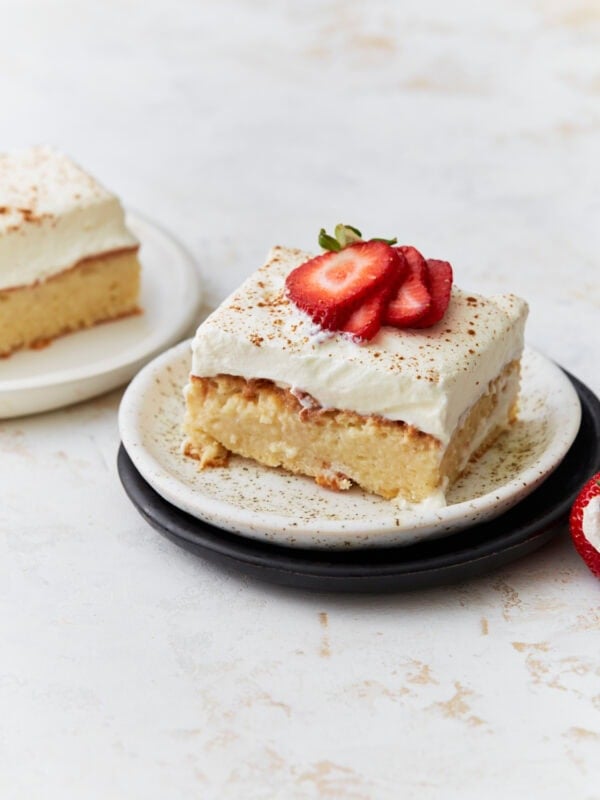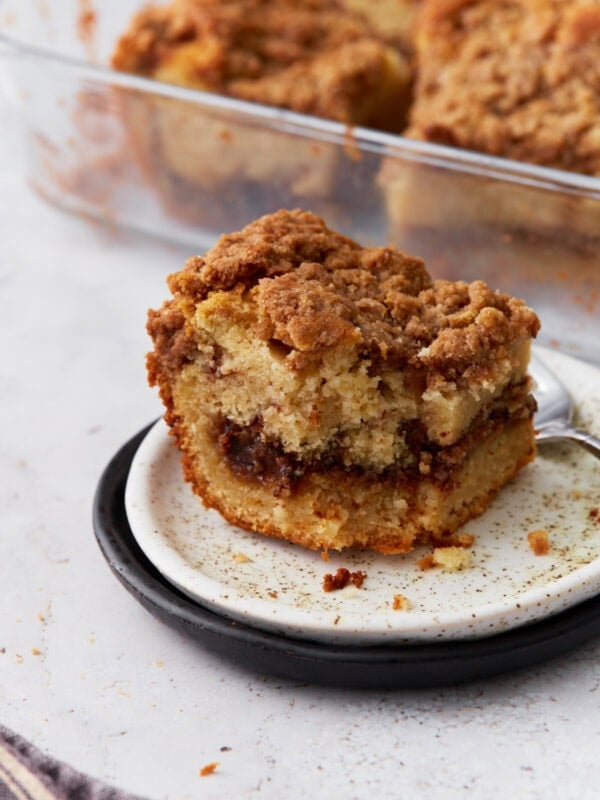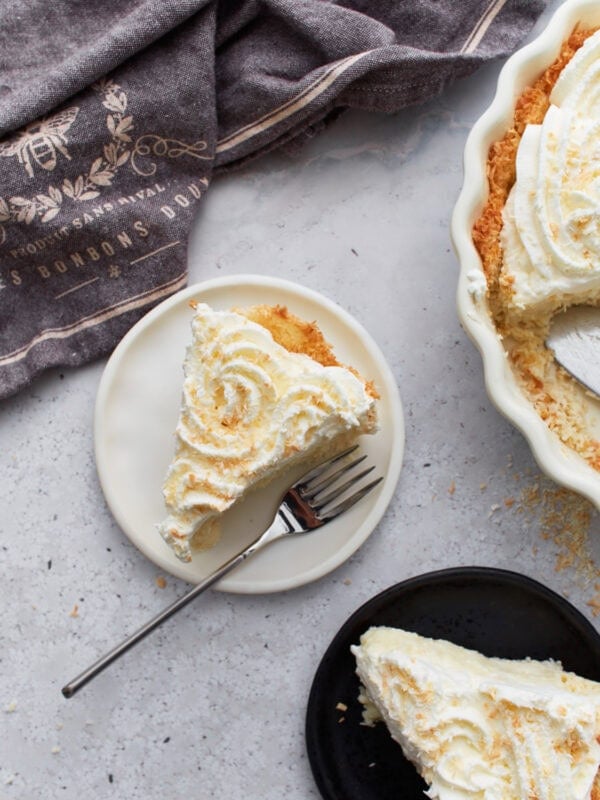Socca (Chickpea Flatbread)
Published
Socca, the beloved French flatbread from Nice, is one of my favorite simple yet satisfying recipes. With just four ingredients—chickpea flour, water, high-quality olive oil, and a touch of salt—it transforms into a beautifully crisp, golden flatbread with a soft, almost custardy center. The edges are light and crispy, making it the perfect balance of texture. Naturally gluten-free and incredibly versatile, the flatbread can be enjoyed on its own, sprinkled with fresh herbs, or paired with dips and spreads.
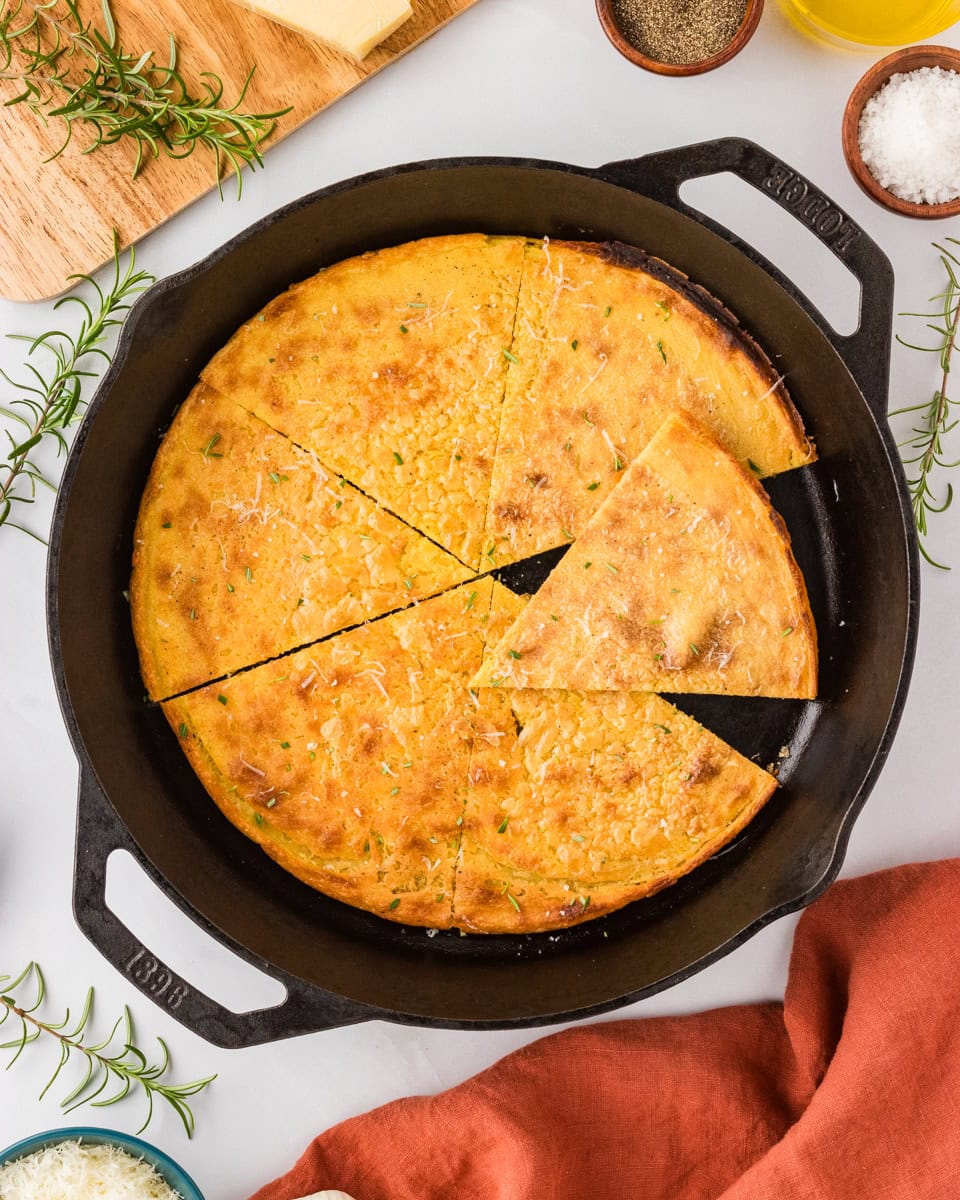
Socca is the French variation of its Italian cousin, farinata. In fact, the recipes are pretty identical (don’t let the Italians or French know I said that). Either way, this delicious flatbread has perfectly crispy edges. My own gluten-free flatbread recipe is a go-to in my kitchen—but sometimes, I find myself wanting an even crispier bite. That’s when I start playing with different techniques to get that extra crunch while still keeping all the flavor I love.
The flavors are very simple and nutty. I particularly enjoyed it with rosemary and parmesan, which don’t distract from the chickpea flavors but pair and compliment it nicely. It’s definitely best served hot, and though it can be reheated, I prefer it fresh. This chickpea flatbread is an easy yet irresistible addition to any meal.
Socca (Chickpea Flatbread)

Equipment
- 1 cast iron skillet
Ingredients
- 1 cup chickpea flour
- 3 tablespoons olive oil
- ¾ teaspoon salt
- 1 cup water
Instructions
- In a medium-sized bowl, add your chickpea flour and salt and gently whisk together. Beginning with oil, Slowly add in the water and 2 tablespoons of olive oil while whisking, and continue until your mixture is smooth. This should create a watery batter.
- Cover your bowl and let it sit at room temperature for anywhere between 1-12 hours. This process allows the chickpea flour to hydrate and absorb the water, that way, you have a smoother texture without the graininess that chickpea flour can sometimes have. I would let it rest for no less than 1 hour.
- Once you’re ready to cook your socca, place a 10-inch cast iron skillet or another oven-safe pan in a cold oven and let the oven preheat to 450°F for about 10 minutes.
- Once the oven is preheated and the pan is very hot, add the remaining 1 tablespoon of olive oil to the pan and spread until the surface and sides are coated. Pour in your batter (it should sizzle and begin cooking on impact).
- Bake for 8-10 minutes then broil until it’s golden brown and the edges are crispy. The socca should naturally pull away from the sides of the pan.
- For an authentic feel, garnish with salt and pepper and serve hot! I like mine garnished with salt, pepper, rosemary, and parmesan.
Notes
- This gluten-free flatbread is incredibly adaptable—feel free to customize it with your favorite flavors! Try adding herbs like thyme or oregano, caramelized onions for sweetness, or a touch of grated cheese for extra richness.
- You can prepare the batter ahead of time and store it in the fridge for up to 12 hours. Just give it a good stir before using it.
- For the best texture, make sure your oven and skillet are fully preheated before adding the batter. A generous amount of olive oil and baking at a high temperature will help create perfectly crisp edges.
- While 30 minutes is enough, letting the batter rest for 2–12 hours (or even overnight in the fridge) helps the chickpea flour fully hydrate. This deepens the flavor and creates a smoother, more cohesive texture.
- For extra crispiness, once the dough is baked, switch to the broiler for 1–2 minutes to get a golden, slightly charred top—just like it’s made in Nice.
Nutrition
Nutrition information is automatically calculated, so should only be used as an approximation.
How to Make Socca Step-by-Step

Gather all your ingredients together.

In a medium-sized mixing bowl, gently whisk together 1 cup chickpea flour and ¾ tsp salt.

While continuing to whisk, slowly add 2 tbsp of olive oil and 1 cup of water. Continue mixing until smooth. The batter should be watery and thin.

Cover the bowl and let the batter rest to ensure the chickpea flour has time to absorb all the moisture. You can let the batter rest for anywhere between 1-12 hours. Anything less than 1 hour will result in a grainy dough.

When you’re ready to cook, place a 10” cast iron skillet or another oven-safe pan in a cold oven and let it preheat with the oven to 450°F. This should take about 10 minutes.

Carefully take the hot pan out of the oven and coat the bottom and sides with 1 tbsp of olive oil.

Pour the batter into the hot, oiled pan. It should sizzle and begin cooking immediately. This technique gives the socca its signature crisp crust.

Place the pan back into the oven and cook for 8-10 minutes. Switch the oven to broil and watch carefully until the top begins to brown and the edges are crispy and start to pull away from the sides of the pan.

For an authentic touch, season with salt and pepper and serve hot! I love adding rosemary and parmesan for extra flavor. Serve and enjoy!
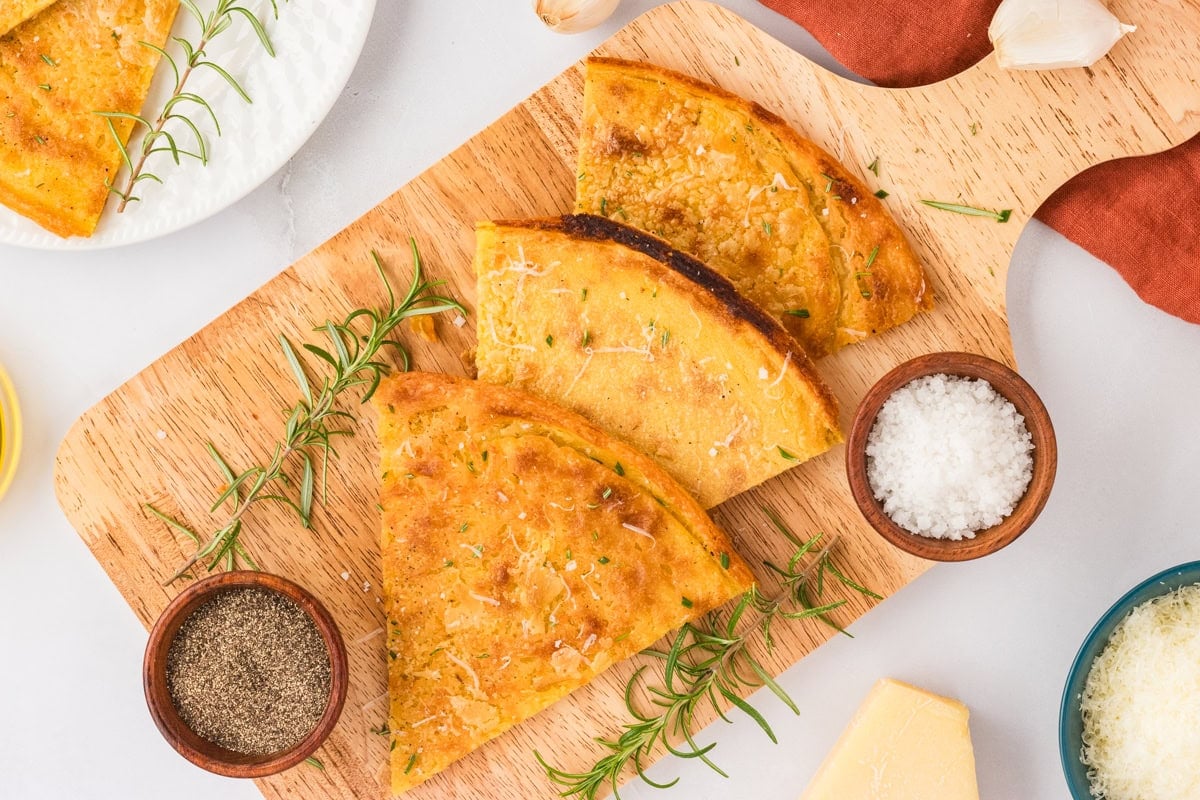
Serving Suggestions
Chickpea flatbread is delicious with a drizzle of high-quality olive oil and a sprinkle of flaky salt to enhance its rich, nutty flavor. I’ve been loving this flatbread on its own as a savory, salty snack or paired with a simple dip of olive oil and balsamic vinegar. The classic French preparation highlights its nutty chickpea and olive oil base with just salt and pepper, though some enjoy adding a dash of cumin and olive oil for a subtle twist. Increasingly popular flavor combinations include garlic, thyme, salt, and pepper; Parmesan and rosemary; chili flakes with olive oil and garlic; or even pizza-style toppings like tomato sauce, fresh vegetables, basil, and mozzarella.
Storage Instructions
Socca is best served and eaten fresh, but if you have any left over, you can store it on the counter at room temp for up to 3 days. To reheat, bake in the oven at 400°F until the edges become crispy again.




